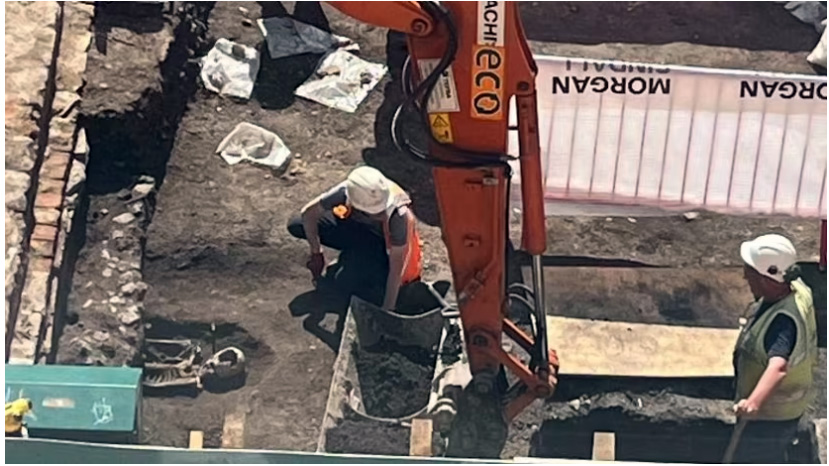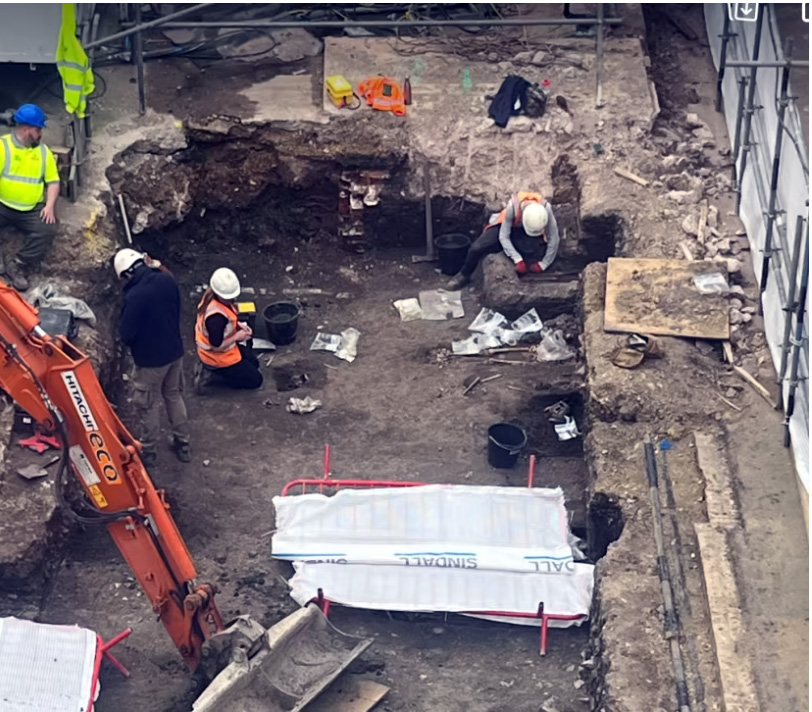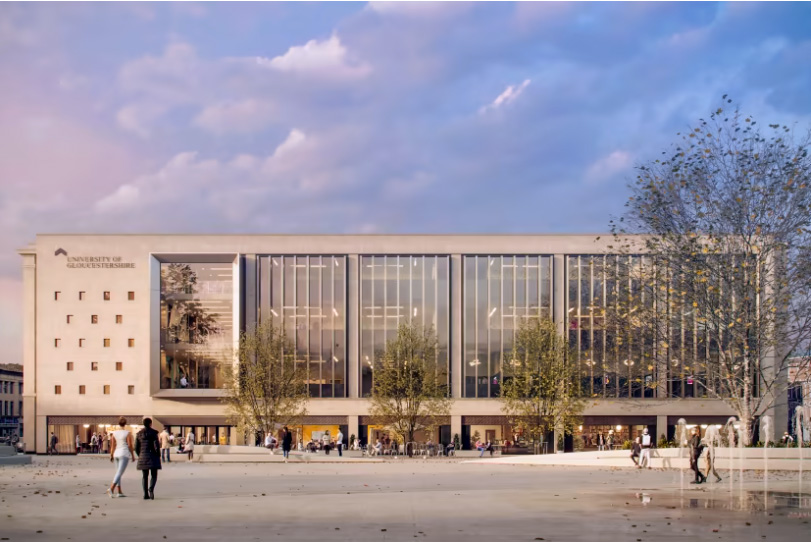Gruesome Archaeological Discoveries Beneath Former Debenhams Store

In a remarkable turn of events, archaeologists have stumbled upon a chilling treasure trove dating back 300 years, hidden beneath an abandoned Debenhams store in Gloucester. During the redevelopment of the site, builders unearthed a wealth of human remains, including a total of 317 skeletons.
The remains were discovered in the vicinity of the old department store, located in King’s Square, which once thrived as a commercial hub. Archaeologists believe that this area was part of the north-eastern quadrant of an ancient Roman town. The skeletons were found within brick-built vaults and a crypt, indicating a significant historical presence in the region.
Among the most notable findings is an impressive eight-meter-long footing from the Western elevation and porch of the St Aldate’s Church. Experts suggest that this church was constructed around 1750 and named in honor of the bishop of Gloucester. It is widely accepted that the medieval St Aldate’s Church was demolished in the mid-17th century, following the tumultuous events of the English Civil War.
Within the basement area, which once housed the menswear department, archaeologists uncovered Roman pottery and a cobbled stone surface, both dating back to the second century. Additionally, substantial fragments of a reticulated tracery church window, believed to originate from the early 14th century, were also excavated. Further intriguing discoveries included pillars from the 1700s, found in the delivery area of the abandoned Debenhams.
Other unusual artifacts included remnants of a tobacco pipe and a post-medieval wine bottle, adding a quirky touch to this significant archaeological site.
Insights from Archaeological Experts

Cliff Bateman, the senior project officer at Cotswold Archaeology, shared insights on the findings: “The site has immense potential to enhance public understanding of the Roman, medieval, and post-medieval development of this section of Gloucester. It’s astonishing how significant Gloucester is in the realm of archaeological study. Beneath the 18th-century church and medieval and post-medieval burials, Roman structures may still lie in situ. Every excavation we conduct in Gloucester reveals new discoveries—it’s a profoundly important locale.”
Other Archaeological Discoveries

This discovery coincides with the recent unearthing of a variety of centuries-old artifacts in a Yorkshire field, found using a metal detector. Dubbed the Melsonby Hoard, this remarkable hoard could prompt a reevaluation of the wealth and status of the elite in northern Britain circa 2,000 years ago. The Iron Age items, discovered by detectorist Peter Heads in 2021, have remained untouched in two ditches since the mid-1st century and consist of approximately 800 items, including partial remains of wagons, ceremonial spears, and pony harnesses.
Experts believe this could be one of the most significant archaeological findings in the UK and anticipate that it will require extensive study for years to come.
In another intriguing find, a massive treasure trove of 400-year-old coins was discovered hidden within the leg of a statue in a church. Restoration workers uncovered four bulging bags of golden coins concealed inside a stone cavity while working on a renowned Gothic church in Germany. Historians speculate that this bounty was hidden from Swedish looters who frequently plundered the region during the Thirty Years’ War in the 17th century.
Ulf Dräger, curator and head of the State Coin Cabinet in Germany, remarked to Live Science that this discovery represents a captivating chapter in history. The trove of 816 coins was initially uncovered at St Andrews Church in Eisleben, central-east Germany, in 2022, but the details have only recently been disclosed. This church holds historical significance as it was the site where Martin Luther, a pivotal figure in the Protestant Reformation, delivered his last sermons in 1546.